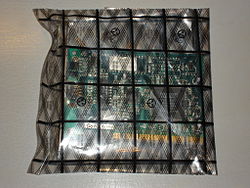This article relies largely or entirely on a single source .(September 2014) |


Electrostatic discharge materials (ESD materials) are plastics that reduce static electricity to protect against damage to electrostatic-sensitive devices (ESD) or to prevent the accidental ignition of flammable liquids or gases.